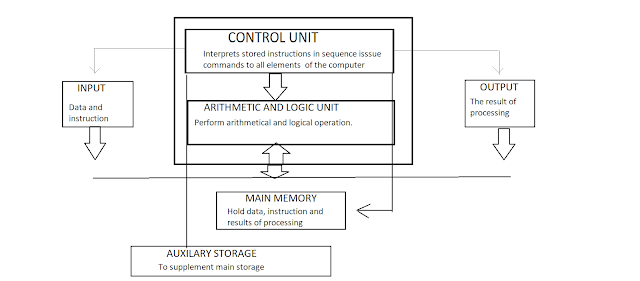Concept of Computer Architecture
The basic fundamental operational structure of computer system organizes according to the different parts is known as computer architecture. Computer architecture refers to software standards, hardware instructions and technology infrastructure that defines how computer systems, platforms and program operate. In other words, computer architecture outlines the system's design functionality and compatibility. There are three parts of computer architecture:
System Design Architecture (SDA)
This includes all hardware components in the system, with data processors aside from the CPU, such as the graphics processing unit and direct memory access. It also includes memory controllers, data paths and miscellaneous things like multiprocessing and virtualization.
Instruction Set Architecture (ISA)
This is the embedded programming language of the central processing unit. It defines the CPU's functions and capabilities based on what programming it can perform or process. This includes the word size, processor register types, memory addressing modes, data formats and the instruction set that programmers use.
Micro Architecture (MA)
This is also known as computer organization is the part of architecture which defines the data paths, data processing and storage elements, as well as how they should be implemented in the Instruction Set Architecture.
Block Diagram of computer architecture
A computer takes help of a different device to perform varieties of jobs. It can process a large volume of data and produce a desirable result. When we get inside working of computer we find that there are different hardware components (categorized under different types or unit ) playing their roles to support the overall processing of computer system. The internal architecture of computer system connecting each unit creates a block diagram.
The following are the stepwise activities involved logically in the computer architecture.
- At first, data (raw facts or symbols ) are transferred from input devices or memory device to the processor to perform the certain operation and retained in primary memory.
- The processor then performs the related operations on such data from primary memory and returns the results of processing against to the same memory location.
- While processing data there is direct involvement of control unit and according to its instruction the ALU performs the required operation and the information again turned back to the main memory.
- From the main memory the information may go to the output selection or secondary storage for current or future purpose.
- Again data may be opened or taken from secondary storage for future processing or modification.
- During the all logical operations the control unit controls the entire components including ALU, main memory , Input/Output unit, primary secondary memory etc.








0 Comments
Any queries ! check out here